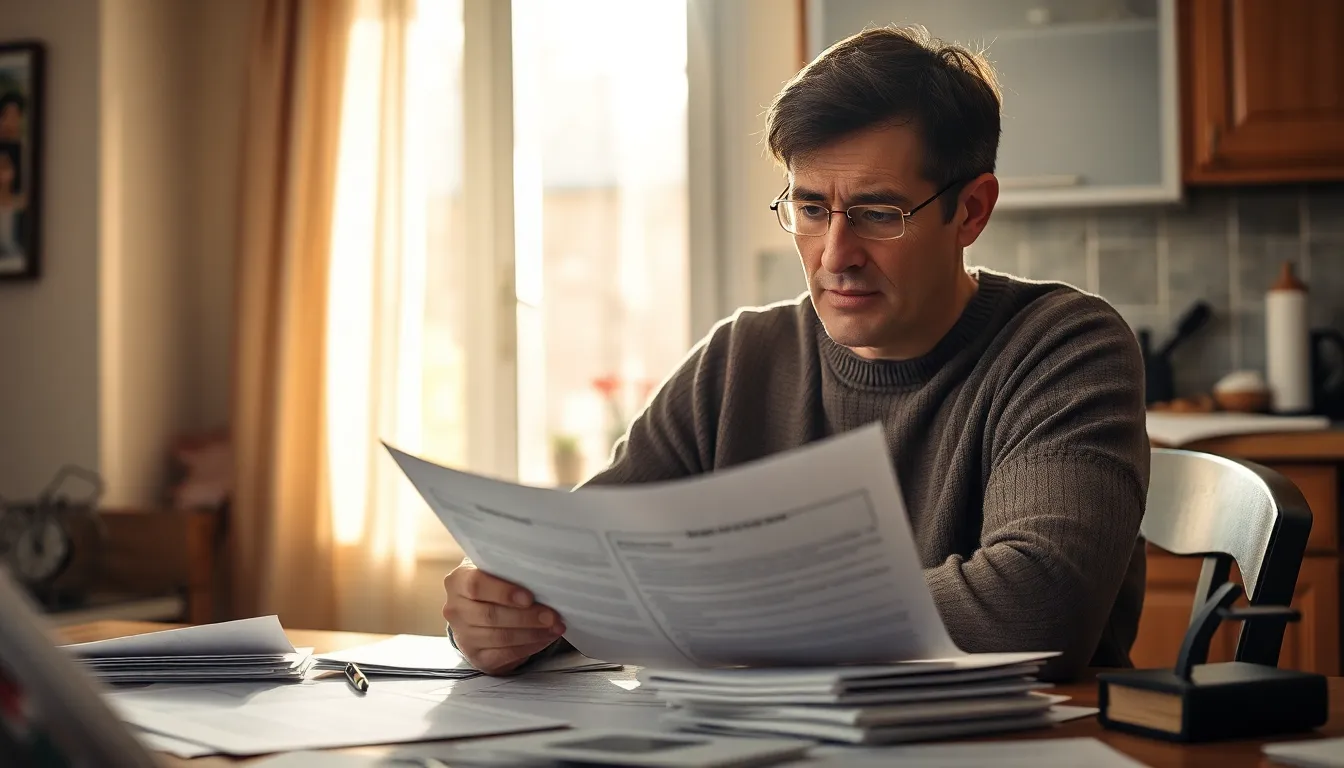Navigating the world of refinancing can feel like trying to find a needle in a haystack. With terms like “break-even point” tossed around, it’s easy to get lost in the jargon. But fear not! Understanding this concept can save homeowners time and money, and who doesn’t want that?
Table of Contents
ToggleUnderstanding Break-Even Point Refinance
Break-even point refinance refers to the moment when savings from refinancing equal the costs incurred during the process. Homeowners should calculate this point to determine the financial viability of refinancing. It often involves analyzing both upfront costs and potential monthly savings.
Calculating the break-even point involves dividing total refinancing costs by monthly savings. If refinancing costs amount to $3,000 and monthly savings equal $300, the break-even point occurs in ten months. This means homeowners recover their upfront costs within that timeframe.
Several factors influence the break-even point. Interest rates, loan terms, and closing costs play critical roles. A lower interest rate can decrease monthly payments, leading to quicker recovery of costs. Longer loan terms generally reduce monthly payments, but they can extend the break-even point.
Different types of refinancing options impact the break-even point as well. Rate-and-term refinancing typically focuses on lowering interest rates or adjusting the loan term. Cash-out refinancing, however, applies additional borrowings, affecting total costs and, subsequently, the break-even calculation.
Considering the break-even point helps homeowners make informed decisions regarding their financial strategies. Assessing various loan scenarios and potential savings supports accurate evaluations. Utilizing online calculators or consulting financial advisors can simplify this process and provide clearer insights.
Factors Influencing Break-Even Point
Several factors influence the break-even point in refinancing, each playing a crucial role in determining the financial benefits. Understanding these elements fosters better decision-making.
Loan Terms and Interest Rates
Loan terms and interest rates significantly affect the break-even point. Shorter loan terms often reduce total interest paid over the life of the loan, leading to quicker savings realization. Adjusting interest rates can also create noticeable differences; lower rates generally enhance savings potential. Homeowners should compare the current rate against their existing one to assess potential benefits. Monthly payments may also fluctuate based on these parameters, impacting overall savings. Evaluating different scenarios in terms of duration and rates helps create a clearer picture of potential costs and benefits.
Closing Costs and Fees
Closing costs and fees represent another critical factor in the break-even equation. These costs usually range from 2% to 5% of the loan amount, comprising various expenses such as appraisal fees, title insurance, and attorney fees. Homeowners must add these figures to the total refinancing costs when calculating the break-even point. The impact of these costs varies depending on the refinancing option chosen. Higher closing costs can extend the break-even period, while lower costs may enable quicker savings. Ensuring transparency in these fees facilitates accurate financial assessments.
Calculating Your Break-Even Point
Determining the break-even point involves a straightforward process crucial for homeowners. This calculation reveals when refinancing costs equal savings achieved, allowing for informed financial decisions.
Formula for Calculation
The break-even point formula calculates by dividing total refinancing costs by monthly savings. For instance, if refinancing costs amount to $5,000 and monthly savings are $200, the break-even point becomes 25 months. Evaluating values such as closing costs and interest rates plays a vital role in accuracy. Each factor substantially influences the overall calculations and impacts the financial viability of refinancing options available.
Example Scenarios
Consider a homeowner with a $300,000 mortgage who refinances to obtain a lower interest rate. If the refinancing incurs $4,500 in costs and results in $150 monthly savings, the calculation shows a break-even point of 30 months. Alternatively, another homeowner might incur $3,000 in costs with $200 in monthly savings, leading to a break-even point of 15 months. These examples illustrate various scenarios reflecting the direct connection between costs and savings in refinancing decisions.
Benefits of Break-Even Point Refinance
Refinancing at the break-even point provides financial clarity for homeowners. By utilizing this approach, they can ensure that their savings surpass refinancing costs. Financial flexibility emerges as a significant advantage; lower monthly payments can lead to improved cash flow, allowing for better budget management.
Savings potential often increases with reduced interest rates, decreasing the overall loan cost. Shorter loan terms enhance equity accumulation, benefitting long-term financial goals. Homeowners may also access lower interest rates, which occur in improving credit conditions or market changes. Realizing these savings makes refinancing appealing.
Additionally, cash-out refinancing enables homeowners to leverage their equity for other expenses, such as home improvements or debt consolidation. Real estate appreciation further amplifies benefits; increased property values can enhance available equity for refinancing.
Tax advantages often accompany refinancing, particularly when integrating cash-outs for home improvements. In some cases, homeowners might deduct mortgage interest on their tax returns, resulting in additional savings. These tax advantages can lead to substantial financial relief.
Analyzing different refinancing options also uncovers various benefits. Rate-and-term refinancing focuses on modifying existing loans, while cash-out refinancing maximizes equity for future investments. Each option caters to distinct financial scenarios, allowing homeowners to select the most beneficial path.
Understanding the break-even point equips homeowners with the necessary tools to make informed refinancing decisions. By evaluating financial needs and market conditions, they can determine the best approach for their specific situations. An informed strategy can ultimately lead to savings, flexibility, and long-term financial health.
Considerations Before Refinancing
Homeowners must evaluate several factors before deciding to refinance. Interest rates represent a significant consideration; lower rates can enhance potential savings. Loan terms directly influence savings realization, with shorter terms leading to quicker benefits. Closing costs, generally ranging from 2% to 5% of the loan amount, significantly affect the break-even point, so owners should calculate these expenses carefully.
Financial goals also play a crucial role in this process. Aligning refinancing with long-term objectives helps in making informed choices. Cash-out refinancing offers flexibility, allowing homeowners to access equity for various projects like home improvements or debt consolidation. Real estate appreciation can enhance refinancing advantages, as increased property values can improve financial standing.
Consulting financial advisors can provide insights and aid in developing a comprehensive plan. Online calculators serve as useful tools for assessing scenarios and understanding potential outcomes. Homeowners must also consider their time horizon—those planning to move soon may not benefit from refinancing, while those in their homes long-term might see substantial savings.
Taking into account personal circumstances ensures a well-rounded decision. Assessing the break-even point provides clarity on when savings will offset costs, guiding homeowners in their refinancing journey. An accurate calculation leads to better financial choices and potential savings. Understanding this process allows homeowners to make decisions that align with their financial well-being.
Conclusion
Understanding the break-even point in refinancing is essential for homeowners seeking to optimize their financial situation. By accurately calculating this point, they can determine whether refinancing will yield meaningful savings. Factors like interest rates and closing costs play a significant role in this equation, influencing how quickly they can expect to see benefits.
Homeowners should align their refinancing decisions with their long-term goals while considering their current financial landscape. Taking the time to evaluate these aspects can lead to improved cash flow and greater financial flexibility. With the right information and guidance, refinancing can be a valuable tool in achieving financial health and stability.









